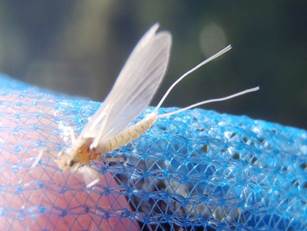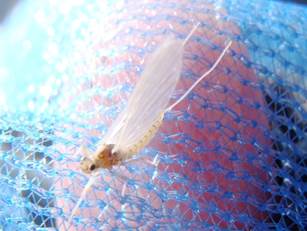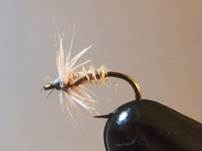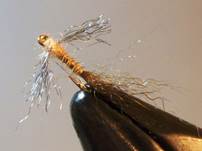PRESENTATION OR FLY PATTERN (part 2)
| Sysadmin Note |
|---|
| Part 1 can be found here |
This fall's Baetis hatch at DePuy Spring Creek (www.depuyspringcreek.com) was indeed a "classroom of fly-fishing"; filled with too many valuable lessons. This whole period kept me on my toes and made me think and rethink every day. Besides the main story covered in the first article, there are a few more topics to share. These are actual occurrences and are relevant to the main story, however putting them all together in one chapter would have been too overwhelming. This does not mean these topics could have been omitted. Rather, if the first article is the general description of the situation, these are more detailed and minute topics that add strong flavors and that every spring-creek enthusiast may be dying to experience!
I was catching up with trout feeding that were feeding on these unusual Baetis. I did not have the perfect pattern but I was getting somewhat comfortable with the situation. Then in one afternoon, they appeared in another different and unexpected color.
|
|
Not gray, is it? |
Nor dark-olive for sure……. |
These were also in the same sizes; mostly 24 plus some 22's mixed in, but they were definitely in a lighter color. It almost resembled a Sulphur (Ephemerella Invaria; but I understand it's in a different family from Baetidae). Could it be another different species? Did they look like this because of the sunlight and other environmental factors? One thing I can tell you for sure is that trout stopped taking my flies which had been successful until then (that is, gray or gray-olive colored ones). I tied up the same patterns to suit this new coloration. I was back in business. I could get some actions with these new colors!! This experience really tells me that trout can recognize "size, color, & shape" when they are feeding. Here are the "trifecta" of fly designing.
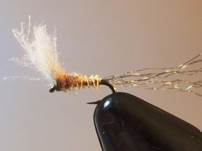 |
|
|
CDC Sparkle Dun – TB Body
|
Master Angler's Soft-Hackle
|
Yamamoto's Spent Dun SSS
|
Again, I am not sure if this is a different species that we haven't heard of. As soon as I hear something about this, I will report to the editor.
That said, how about this? I eventually started seeing this coloration too. This seemed more common to us regulars in terms of color = dark olive. Do I need to imitate its distinctive eyes on my fly?
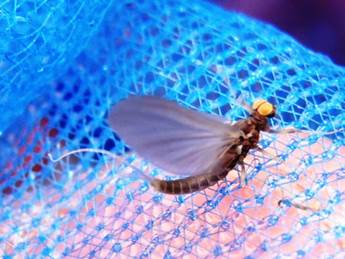
Annie's Run is technical, the insect hatch is confusing, and the trout are very selective. This is the toughest condition one can ever get into!
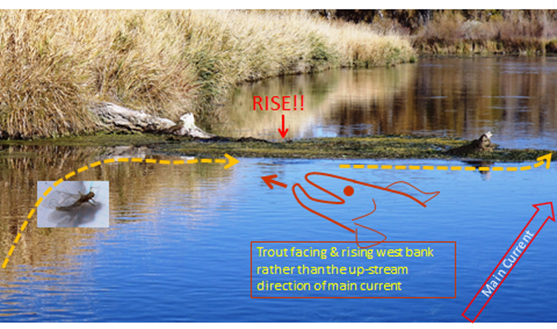
There is a log sticking out from the west bank (covered by dying weeds). This adds a very unique character to the sections otherwise wide and flat features. Insects (either on surface or slightly below) following the micro current caused by the log. There seemed to be one or two trout hanging and rising (sipping) tight to the log. Judging from their rise-forms and rings they were facing the west bank rather than the upstream direction of main current. Fishing the flat smooth main current was already difficult so how could I fish this little tight spot? I could have ignored them and focused the trout that were rising in main current. However, those trout by the log looked big. and I confess that I tend to treat myself sadistically by putting myself into tough fishing situations. I worked on this spot a lot (actually almost every day). When I gave up or ended up spooking trout for the day, I would pivot and cast to the main current catch some trout from the main current. I talked about this situation with Buzz at the Spring Creek Specialists Fly Shop (www.springcreekspecialists.com). When I took days-off from the creek Buzz worked on the spot and he told me about his success. Did I make it or even get close? I leave it up to your imagination as you would simulate yourselves "if you were in my spot".
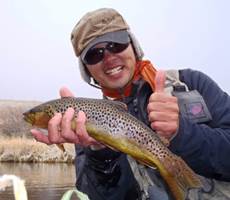
A perfect "Baetis weather" = cold & overcast with occasional snow = aided me coax "log sipper" into taking my fly!!
The Trout is The Authority:
Last but least, this could perhaps be the conclusive statement of the whole discussion. I had learned the duns' appearance, the trout's selectivity to ascending nymphs, and tied some effective fly patterns. However, one particular afternoon trout paid no attention to my dry-fly duns and ascending nymphs. For a change I tied on an emerger pattern which Buzz introduced to me and I started to get some action. Catching one is the true enjoyment but pumping the stomach for investigation is my true curiosity. During that afternoon, trout were exclusively feeding on emergers.
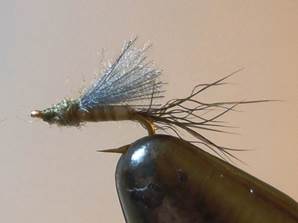 |
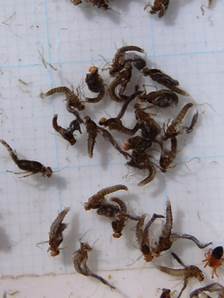 |
Yamamoto's Improved Pheasant Puff (PP2)
Original Pheasant Puff is an improved tie of the old RS-II. This "PP2" is constructed with a distinctive goose-biot abdomen plus a unique shuck like effect of snowshoe rabbit feet. Using dark wing in spite of poor visibility, as it's intended to imitate dark wing buds of baetis. So it's suggested to trail under a visible dun pattern (such as CDC Sparkle Dun). |
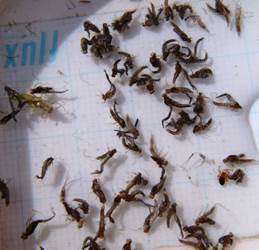 |
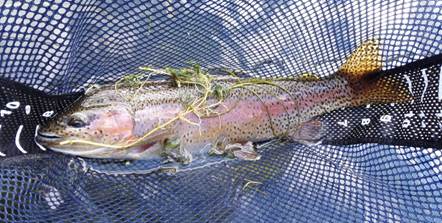 Nice rainbow caught in the "emerger" afternoon! |
|
OK, I had been forgetting emergers. Up until this point, I had never thought about the term "trout selectivity" would imply this much. It was just like human habits. People would go to their usual fast-food catering (for trout, its Annie's Run) but order different menus on different days or depending on their moods (for trout, it can be duns, emergers, nymphs, or "combo" of two or three).
When we are fly-fishing, it's the trout that make the final judgment on our fly patterns and presentations. We are the ones that need to adjust our fishing style to adapt to how the trout are feeding. Once we swallow this concept, our noticeability and observation are our means to decipher and understand what trout are saying. The more I fish the Livingston's spring creeks I am constantly learning and relearning. That's why spring creeks are an excellent classroom for the fly fisherman.
Satoshi Yamamoto, https://leftyangler.blogspot.com, brought his passion for fly-fishing and fly-tying and became the first ever Japanese guide in Livingston, MT. He loves to float Mighty Yellowstone River and wander around Yellowstone Park waters. Perhaps he's only one guide in the area who can translate the complicated mood of spring creeks and trout there in a couple of different languages. Satoshi is an accomplished fly-tyer as well. His innovative patterns, that cover many trout waters, can be seen at https://leftytyer.blogspot.com.

